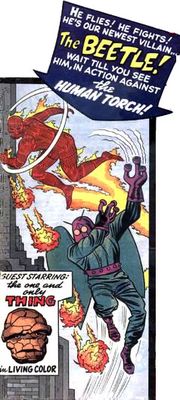Scientists have shown that in a certain group of insects, sex-differences in appearance are not the product of growing structures in a sex-specific manner, as previously assumed, but rather are generated by the sex-specific loss of structures initially grown alike by both males and females.From the press release:
Studying a group of beetles famous for their dramatic diversity in the development of male-specific horns
 (which are used in fights over females), Moczek discovered that growth of horns is surprisingly uniform across sexes. Instead, both sexes undergo a second developmental period during which the female beetles reabsorb massive amounts of horn tissue that they had grown just a few days earlier. The males retain all of their horn tissue into adulthood. As a consequence, fully horned females molt into completely hornless adults.
(which are used in fights over females), Moczek discovered that growth of horns is surprisingly uniform across sexes. Instead, both sexes undergo a second developmental period during which the female beetles reabsorb massive amounts of horn tissue that they had grown just a few days earlier. The males retain all of their horn tissue into adulthood. As a consequence, fully horned females molt into completely hornless adults. "From an engineering perspective this seems very inefficient," Moczek says, "especially given that it takes a lot of energy to grow these structures in the first place."
He speculates that growing horns might serve multiple, hidden functions not apparent in the adult, or that the ancestor to the present-day representatives of these beetles actually had horns in both sexes, and that evolution somehow favored the loss of horns in females but not males.
"If this is correct," he argues, "then it seems to have been easier for females to lose their horns by evolving a way to 'ungrow' them, rather than not growing them in the first place. This is yet another example of the quirky paths that evolution has taken to generate the diversity of biological shapes and forms around us."
Pupal Remodeling and the Development and Evolution of Sexual Dimorphism in Horned Beetles. 2006. Armin P. Moczek. American Naturalist. 168: 711–729.
Here’s a different take on the same research.